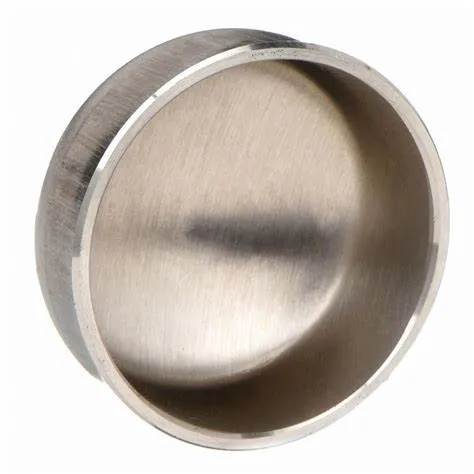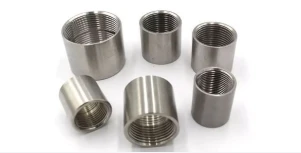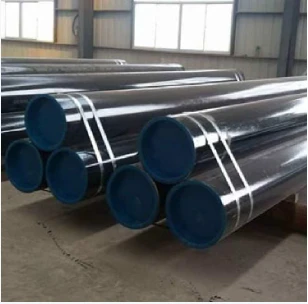JIS B2311-ը ճապոնական արդյունաբերական ստանդարտ է, որն ընդգրկում է եռակցման խողովակների կցամասերը, ներառյալ խողովակաշարերի համակարգերում օգտագործվող գլխարկները: Եռակցման հետույքով կափարիչները ծառայում են խողովակի ծայրը փակելու նպատակին՝ ապահովելով կնիք՝ արտահոսքը կամ աղտոտումը կանխելու համար: Ահա JIS B2311 հետնամասային եռակցման գլխարկների ներածություն.
- 1. JIS B2311 Standard:
- - JIS B2311 ստանդարտը սահմանում է խողովակաշարային համակարգերում հետնամասային եռակցման կցամասերի, ներառյալ գլխարկների նախագծման, չափերի, նյութերի, արտադրության և փորձարկման պահանջները:
- - Ստանդարտն ապահովում է, որ JIS ստանդարտներին համապատասխան արտադրված գլխարկները համապատասխանում են որակի չափանիշներին և համատեղելի են խողովակաշարի այլ բաղադրիչների հետ:
- 2. Հետույք-եռակցման գլխարկ:
- - Եռակցման ետնամասի գլխարկը, ըստ JIS B2311-ի, կցամաս է, որը նախատեսված է խողովակի ծայրը ապահով կերպով փակելու և կնքելու համար՝ ապահովելով պաշտպանություն և պահպանելով խողովակաշարի համակարգի ամբողջականությունը:
- - Կափարիչները օգտագործվում են այն իրավիճակներում, երբ խողովակի ծայրը պահանջում է փակել՝ մշտապես կամ ժամանակավորապես՝ արտահոսքը, աղտոտումը կանխելու կամ համակարգը ավարտելու համար:
- 3. Նյութ և շինարարություն.
- - JIS B2311 բնութագրերի ներքո եռակցման կափարիչները հասանելի են տարբեր նյութերով, ինչպիսիք են ածխածնային պողպատը, չժանգոտվող պողպատը և լեգիրված պողպատը՝ կիրառման տարբեր պահանջները բավարարելու համար:
- - Այս կափարիչները արտադրվում են ստանդարտացված շինարարական մեթոդների կիրառմամբ՝ խողովակի ծայրին եռակցվելիս ամուր և առանց արտահոսքի միացում ապահովելու համար:
- 4. Դիմում և առավելություններ.
- - Եռակցման գլխարկները կիրառվում են տարբեր ոլորտներում, ներառյալ նավթը և գազը, քիմիական գործընթացները, ջրի մաքրման կայանները և ավելին, որտեղ խողովակների ծայրերը պետք է ապահով փակվեն:
- - Կափարիչները պաշտպանում են խողովակների ծայրերը շրջակա միջավայրի տարրերից, կանխում են աղտոտումը և օգնում են պահպանել խողովակաշարի համակարգի մաքրությունն ու ամբողջականությունը:
- 5. Տեղադրում և եռակցում.
- - Համապատասխան տեղադրման պրակտիկան, ներառյալ ճիշտ դասավորվածությունը, խողովակի ծայրի պատրաստումը և եռակցման տեխնիկան, կարևոր են ետևում գտնվող եռակցման կափարիչները տեղադրելիս՝ ամուր և արտահոսքից պաշտպանված կնիքը ապահովելու համար:
- - Եռակցումը խողովակներին գլխարկներ ամրացնելու ընդհանուր մեթոդ է, ապահովելով ապահով և մշտական փակում, որը կարող է դիմակայել ճնշմանը, ջերմաստիճանի տատանումներին և հեղուկի հոսքին համակարգում:
- Ամփոփելով, JIS B2311 հետնամասային եռակցման կափարիչները կարևոր բաղադրիչներ են, որոնք օգտագործվում են խողովակաշարերի համակարգերում՝ խողովակների ծայրերն ապահով կերպով կնքելու և պաշտպանելու համար: Այս կափարիչները համապատասխանում են ստանդարտացված պահանջներին՝ ապահովելու որակը, հուսալիությունը և համատեղելիությունը արդյունաբերական ծրագրերում, որտեղ խողովակների փակումը և պաշտպանությունն անհրաժեշտ են:
What Is a Butt Welding Cap and How Is It Used in Industrial Piping?
In industrial piping systems, end-of-line sealing and branch closures require robust solutions. A butt welding cap serves as a critical component for terminating pipes securely. By providing a seamless, welded closure, this fitting maintains system integrity, prevents leaks, and supports compliance with industry standards.
What Is a Butt Welding Cap?
A butt welding cap—also called a pipe end cap or buttweld end cap—is a round fitting designed to close off the end of a pipe. It’s manufactured to match the pipe’s outer diameter and schedule, with either a hemispherical or flat face. To install, both the pipe end and cap are beveled to form a V‑groove, enabling full‑penetration, fusion welds. Common materials include carbon steel, stainless steel, nickel alloys, and other engineered grades, chosen to satisfy pressure, temperature, and corrosion‑resistance requirements.
How Is Butt Welding Cap Used in Industrial Piping?
Butt welding caps find application across oil & gas, petrochemical, power generation, water treatment, and general process industries for both permanent and temporary closures. During hydrostatic testing, technicians install caps to seal off sections of piping while monitoring for leaks. In new construction or retrofit projects, caps terminate branch lines, future tie‑in spools, or dead‑end mains until system expansion. Welders prepare each joint by cleaning and beveling surfaces, aligning the cap precisely, and executing a root pass followed by filler passes per the qualified Welding Procedure Specification (WPS). Post‑weld heat treatment and non‑destructive examination (NDE)—such as radiography or ultrasonic testing—verify weld integrity and compliance with ASME B16.9 and related standards. Additionally, temporary caps enable safe isolation during maintenance, allowing for segment testing and dewatering under regulatory protocols.
Benefits and Best Practices
Butt welding caps offer a smooth‑bore transition that minimizes flow disruption and stress concentration. Their full‑penetration welds deliver exceptional structural strength and leak resistance. To optimize performance, engineers should:
Select caps with matching material grades and wall thicknesses
Adhere to proper bevel angles and joint fit‑up tolerances
Follow qualified WPS protocols rigorously
Consider cladding or protective coatings in corrosive environments to extend service life
Regular inspection and thorough documentation ensure long‑term reliability and safe operation under demanding conditions.
Butt welding caps are indispensable components for achieving durable, leak‑proof pipe terminations in a wide range of industrial applications.
Butt Welding Cap FAQs
What is a butt welding cap?
|
What materials are commonly used?
|
What standards govern butt welding caps?
|
How are butt welding caps installed?
|
Where are butt welding caps typically used?
|
What are the advantages of threaded caps?
|
















